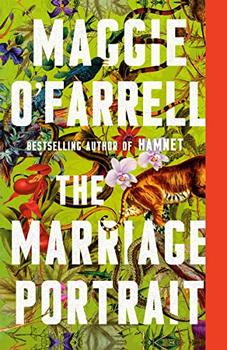Summary | Excerpt | Reading Guide | Reviews | Beyond the Book | Read-Alikes | Genres & Themes | Author Bio

A novel
by Maggie O'FarrellThis article relates to The Marriage Portrait
 In The Marriage Portrait, Maggie O'Farrell captures the dark personality of Alfonso II d'Este, Duke of Ferrara (a region in northern Italy), who lived from 1533 to 1597. Alfonso was the last in his family lineage, which stretched back to the 13th century. As monarchs around the world have experienced throughout history, a lack of male heirs doomed the Este dynasty — despite marrying three times, Alfonso fathered no children. Prior to the end of the line, however, the Este family produced some of the most colorful characters and generous art patrons of the Italian Renaissance.
In The Marriage Portrait, Maggie O'Farrell captures the dark personality of Alfonso II d'Este, Duke of Ferrara (a region in northern Italy), who lived from 1533 to 1597. Alfonso was the last in his family lineage, which stretched back to the 13th century. As monarchs around the world have experienced throughout history, a lack of male heirs doomed the Este dynasty — despite marrying three times, Alfonso fathered no children. Prior to the end of the line, however, the Este family produced some of the most colorful characters and generous art patrons of the Italian Renaissance.
The most notable members of the family include Ercole I (d. 1505), who became a leading patron by bringing artists to the court at Ferrara — he had a particular fondness for music and theater. His two daughters, Beatrice and Isabella, were famous in their time both for their love of fine art and for their political prowess. Beatrice died young, in 1497 at age 21, but she was the wife of the Duke of Milan, Ludovico Sforza, and in 1495 she directed military operations against the invading French army while Ludovico recovered from a stroke.
Isabella (d. 1539) was also famous for her learning and statesmanship. As historian Margaret L. King writes in her book Women of the Renaissance, "…she had mastered Greek and Latin, the signs of serious scholarship, alongside such skills as lute-playing, dance, and witty conversation." She ruled in her husband's stead when he, Francesco, Marquess of Mantua, was captured by the Venetians in 1509. She managed Mantua's defenses until he was released. After Francesco died in 1519, she continued to rule as regent until her eldest son came of age.
Isabella was also renowned for her patronage of artists including Leonardo da Vinci and Titian. Her palace in Mantua had multiple rooms filled with fine paintings she commissioned, and she was an avid collector of antiquities. As a wealthy noblewoman, she had access to education — a relative rarity at the time — and she put her learning to good use.
Despite her erudition, political skills and eye for artwork, Isabella was very insecure about her appearance. Not helping that situation was her husband's affair with the beautiful and notorious Lucrezia Borgia, who was married to Isabella's brother.
It was Lucrezia Borgia's son, Ercole II, who married the Protestant Renée of France, and they produced Alfonso II. Renée looms in the background of The Marriage Portrait as a threat to the political and religious stability of Ferrara as the Reformation roils Europe.
Even with his reign imperiled by a lack of heirs, Alfonso II was a devoted patron of artists, including Torquino Tasso and Giovanni Battista Guarini. He maintained the family's dedication to art, but the dynasty ended with him in 1597, and within a year the pope annexed Ferrara, ending the eventful rule of the Este family.
Isabella d'Este painted by Titian, c. 1534–1536, courtesy of the Kunsthistorisches Museum
Filed under People, Eras & Events
![]() This "beyond the book article" relates to The Marriage Portrait. It originally ran in October 2022 and has been updated for the
July 2023 paperback edition.
Go to magazine.
This "beyond the book article" relates to The Marriage Portrait. It originally ran in October 2022 and has been updated for the
July 2023 paperback edition.
Go to magazine.
Your guide toexceptional books
BookBrowse seeks out and recommends the best in contemporary fiction and nonfiction—books that not only engage and entertain but also deepen our understanding of ourselves and the world around us.